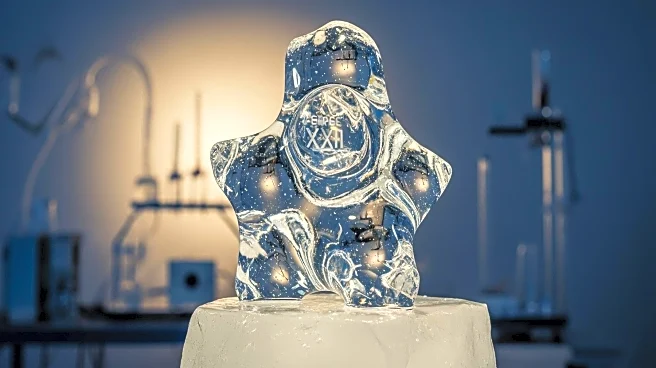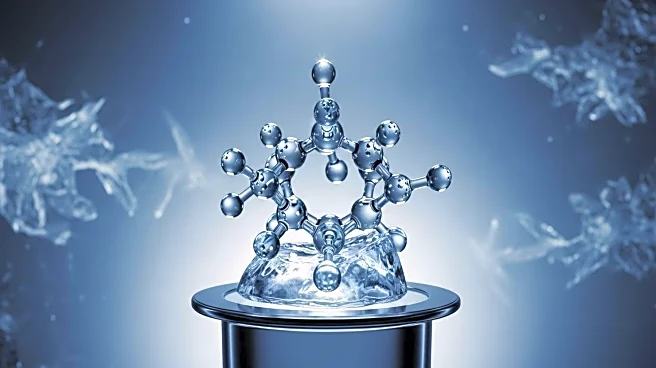What's Happening?
Researchers at the Korea Research Institute of Standards and Science have discovered a new phase of ice, called ice XXI, which forms when water is rapidly compressed at room temperature. This discovery adds to the 20 known crystalline structures of ice and provides
insights into the behavior of water under extreme conditions. The study utilized diamond anvil cells and X-ray lasers to observe the formation of ice XXI, which exists as a metastable structure within the pressure range of ice VI.
Why It's Important?
The discovery of ice XXI expands scientific understanding of water's properties and its potential applications. This new phase could offer insights into the composition of icy moons and other extraterrestrial environments, informing future space exploration missions. Understanding the behavior of water under different conditions is crucial for various scientific fields, including materials science and planetary geology. This research may lead to advancements in technology and exploration.
What's Next?
Further investigations will explore the potential applications of ice XXI and its implications for understanding water's behavior in extreme environments. Researchers may study its stability and interactions with other materials, potentially leading to new technologies. The findings could influence the design of experiments and missions targeting icy bodies in the solar system.
Beyond the Headlines
The discovery of ice XXI highlights the complexity of water, a seemingly simple substance with diverse properties. This research underscores the importance of fundamental scientific exploration in uncovering new phenomena. The implications for space exploration and materials science may drive future innovations and ethical considerations regarding the use of natural resources.














